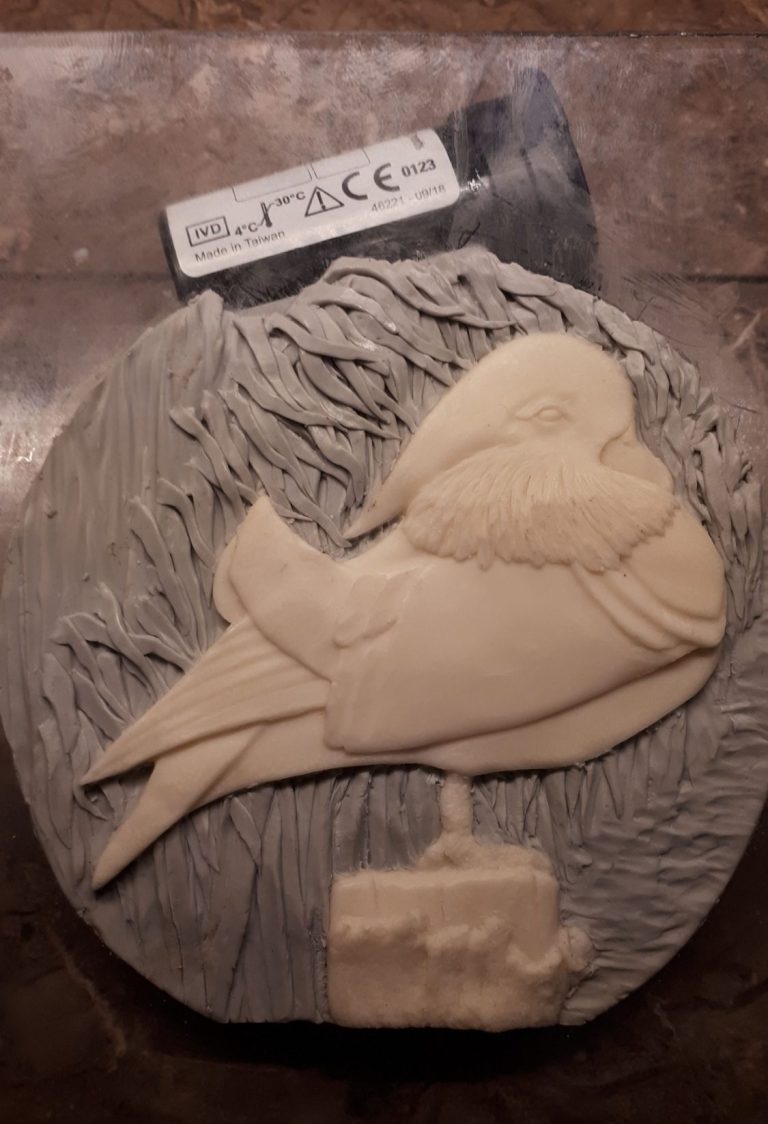
Mandarin Duck
Sculpted in 2019 for Bash Models
I’d seen Fet Milner’s very small scale ducks – I think they were 1/35th scale at the Darlington show in 2019, and was already planning on sculpting another flat to add to the Bash Models range.
On returning from the show I was enthused by the idea of birdlife, and having a quick look through one of two reference tomes found a lovely picture of the very colourful Mandarin Duck.
I though this might make a very colourful flat figure, and photo #1 shows the beginning of the sculpting phase.
The picture on the left is the shot I used for reference, and a tracing of the main sectional split is visible beneath a small sheet of glass that the Magic Sculpt putty is applied to.
The tracing is held to the back face of the glass with some Sellotape, and the reason a sheet of glass is used is so that the tracing can be seen, but also it’s a very flat surface to allow a moulding to be taken from the finished sculpture.
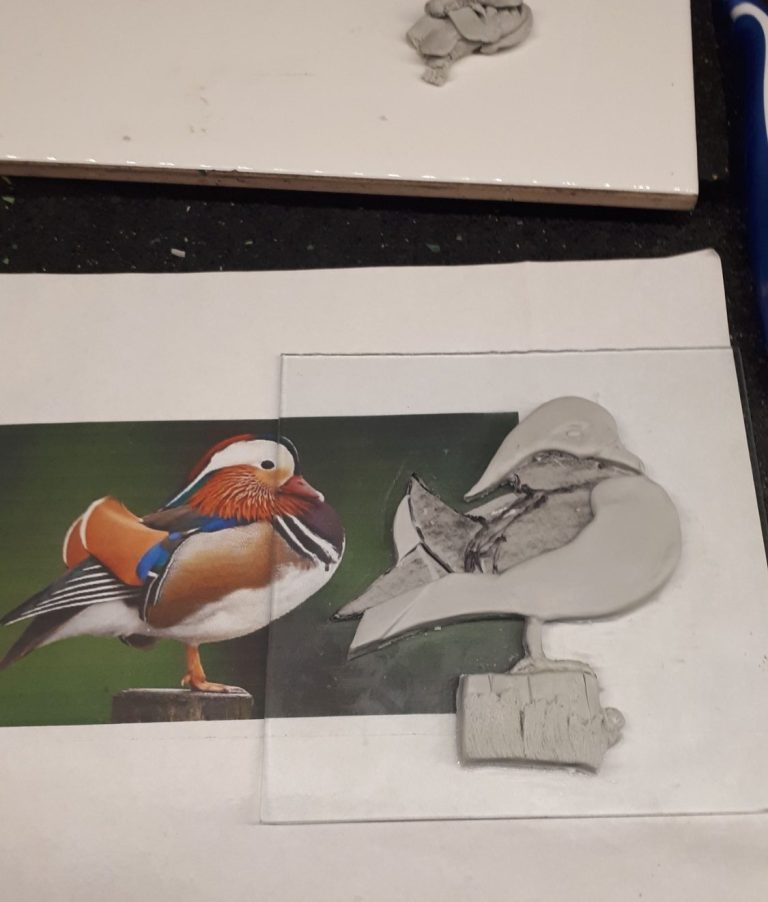
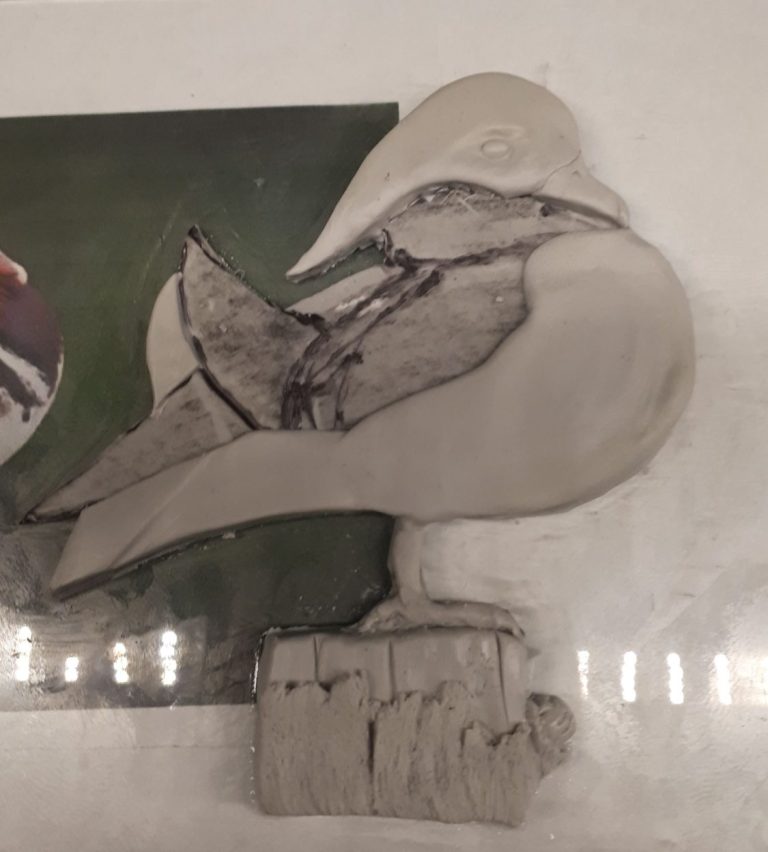
Photo #2 gives a closer look at the sculpture at this stage, the head, chest / belly, legs, feet and a tree stump have been added, with the wings and tail feathers still to be sculpted.
Using this process of adding to the flat in sections allows me to control the overall thickness of the model, something I struggled with on earlier attempts. Whilst the flat is going to be around 5mm thick overall, that is simply to make it easier to make a deep mould when I’m pouring the rubber. The amount of resin added to the mould can then be chosen to either produce a thicker flat that will transport easily to a customer, or a thinner one that I prefer for myself.
Photo #3 shows the completed master sculpt on it’s piece of glass. A “wall” of plasticine can then be added around the flat, and sealed to the glass, and RTV ( Room Temperature Vulcanising ) rubber poured in and allowed to cure
It’s at this stage that the sculpture needs careful checking, because the RTV rubber will reproduce everything perfectly, even down to slight fingerprints or tool marks.
A real double edged sword, in that it will allow for the finest detail to be reproduced, but also the merest flaw.
So careful checking, cleaning off any dust, and a quick wash with warm water and detergent and then set aside to dry.
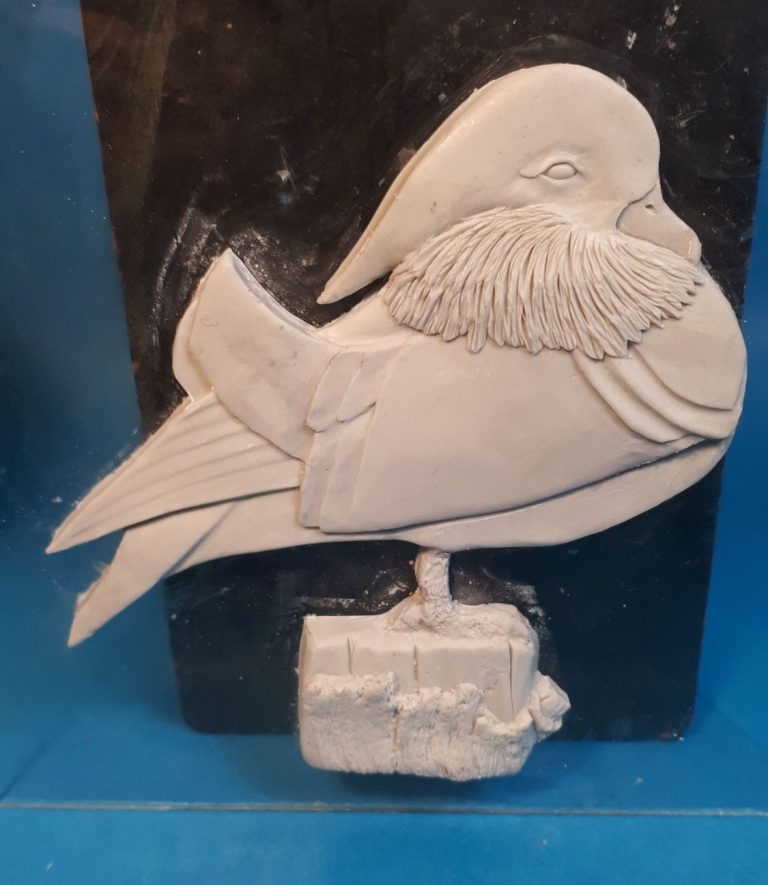
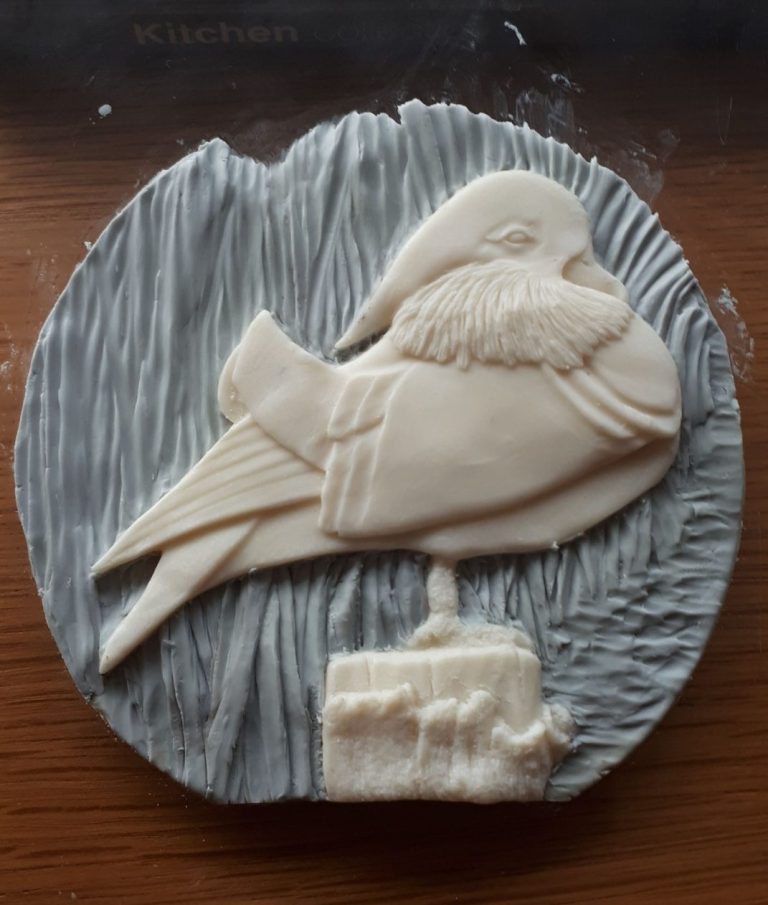
And with the magic of article writing, photo #4 shows a casting of the duck – available from seller ash0040 on eBay – with the beginning of a background.
Although the duck on it’s own looked OK, I thought that some people might want a background that they could paint. Some flat artists prefer a simple, single coloured backing card ( commonly black, but I’ve seen other colours used ) and some people like adding their own backings, sparking their artistic skills to produce pictures to compliment their flats.
As a middle ground I thought that maybe producing a background setting of some reeds or bulrushes might work quite well .......
and this is shown developing in photo #5 where the upright reeds were added in the last shot, here the dried tips of the plants that fold over and catch the wind have been added above the casting of the duck.
Photo #6 shows the completed reeds, and this second master sculpting will again be checked for faults, cleaned and then a mould made with more of the RTV rubber so that castings can be produced.
Intermediate thoughts…..
Well, I haven’t painted one yet, it’s been on the “to do” list for six years, and I’m still no closer.
I’ve sold a few of these but not yet seen one painted, and really I should extract a digit and get one done myself, even if only to be put up on eBay as a painted example for selling the unpainted flats.
Of the two, I think I prefer the one with the reed backing, there’s a lot of detail can be added with paint, and the Mandarin Duck is such a colourful bird.
Yes, I must paint one…… Um….. Soon !
Both the duck on it’s own and the one with the background are available on eBay from seller ash0040 for £2.50 and £3.50 plus postage respectively.
